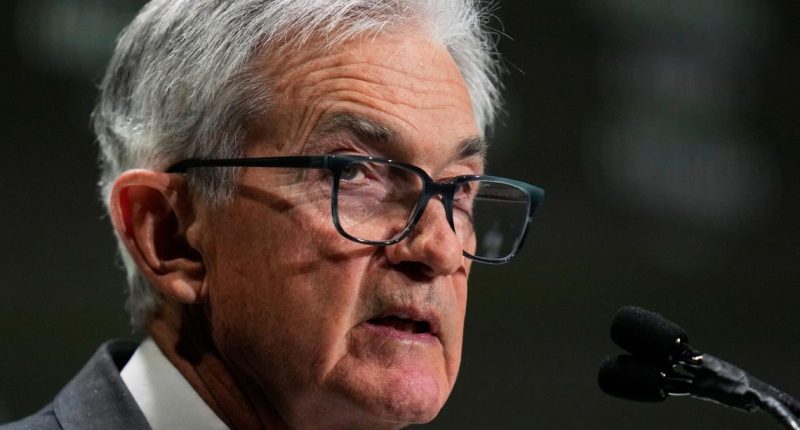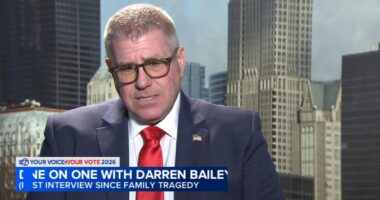Share this @internewscast.com

The central bank also released its latest quarterly projections for the economy and interest rates.
WASHINGTON — Officials from the Federal Reserve anticipate increased inflation in the upcoming months, yet they still predict two interest rate reductions by the end of this year, consistent with their March projections.
On Wednesday, the Fed left its benchmark interest rate unchanged for the fourth consecutive meeting, stating that the economy is growing at “a solid pace.” Typically, though not always, shifts in the Fed’s rate can impact borrowing costs for mortgages, car loans, credit cards, and business financing.
The central bank also published its latest quarterly economic and interest rate forecasts. By year’s end, it projects slower economic growth, rising inflation, and a slight uptick in unemployment compared to its March estimates, formed before President Donald Trump announced extensive tariffs on April 2, which were largely postponed by April 9. The Fed additionally conveyed that it plans to lower rates just once in 2026, a reduction from the two cuts anticipated in March.
Fed officials see inflation, according to its preferred measure, rising to 3% by the end of this year, from 2.1% in April. It also projects the unemployment rate will rise to 4.5%, from 4.2% currently. Growth is expected to slow to just 1.4% this year, down from 2.5% last year.
Despite the gloomier outlook, Fed chair Jerome Powell and other officials have underscored that they are holding off from any changes to their key rate because of the uncertainty surrounding the impact of the tariffs and economic outlook. Some of the Fed’s policymakers have expressed particular concern that the duties could boost prices, creating another surge of inflation just a couple of years after the worst inflation spike in four decades. Many economists say that without the higher import taxes, the Fed would likely be cutting its rate further.
Yet so far, inflation has cooled this year to just 2.1% in April, essentially back at the central bank’s target of 2%. Core inflation, which excludes the volatile food and energy categories, remains elevated at 2.5%.
Trump has pointed to the mild inflation figures to argue that the Fed should lower borrowing costs and has repeatedly criticized Powell for not doing so. On Wednesday he called Powell “stupid” and accused him of being “political” for not cutting rates.
Trump has previously argued that a rate cut would boost the economy. Now his focus has shifted to the federal government’s borrowing costs, which have shot higher since the pandemic, with interest payments running at an annual rate of more than $1 trillion.
Pushing the Fed to cut rates simply to save the government on its interest payments typically raises alarms among economists, because it would threaten the Fed’s congressional mandate to focus on stable prices and maximum employment.
One of Trump’s complaints is that the Fed isn’t cutting rates even as other central banks around the world have reduced their borrowing costs, including in Europe, Canada, and the U.K. On Tuesday, the Bank of Japan kept its key short-term rate unchanged at 0.5%, after actually raising it recently.
But the European Central Bank, Bank of Canada, and Bank of England have reduced their rates this year in part because U.S. tariffs are weakening their economies. So far the U.S. economy is mostly solid, with the unemployment rate low.
The Bank of England has cut its rate twice this year but is expected to keep it unchanged at 4.25% when it meets Thursday.
















